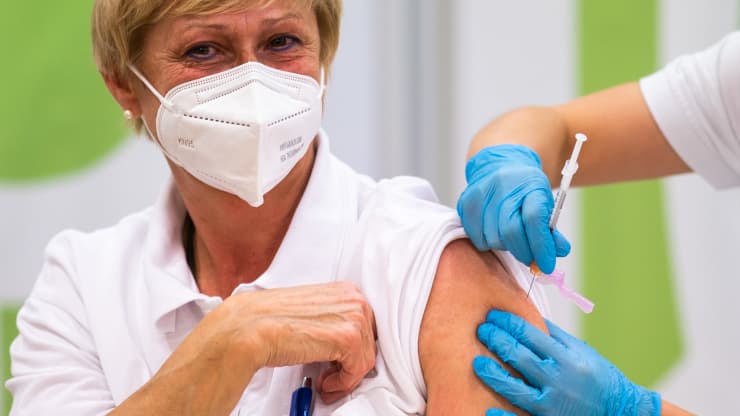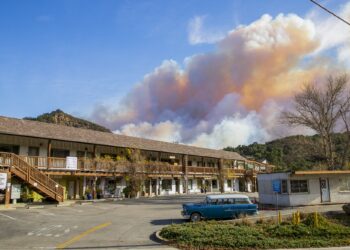The globe has been grappling with the COVID-19 vaccine for nearly a year, and as we finally begin to distribute vaccines and project what the summer and fall of 2021 will look like (keep an eye on Israel, a country that is reporting great results after vaccinating a third of its population), questions have been raised about vaccinating our kids younger than 16 years old.
Joe Biden‘s administration has said it want schools open in its first 100 days, but that strategy is rife with complications, even though the Centers for Disease Control (CDC) has reported that transmissions in schools can be low risk as long as the proper safety measures are put in place.
Despite this report and the historic nature of the pandemic and vaccine production, the reaction seen with vaccine approvals for adults provides insight into how the response to COVID-19 vaccinations might go when approved for young children and tweens. There is hope, though, but the work has to start now.
Vaccine Approvals Underway for Children, Start Communicating Now
Currently, two vaccines have received approval from the FDA and are available in the US: Moderna’s two-dose vaccine (94 percent effective and authorized to be administered to people 18 years of age and older) and Pfizer-BioNTech’s two-dose vaccine (95 percent efficacy and approved for people 16 years and older).
In addition to these, Johnson & Johson’s vaccine could soon be available in the US, and a fourth vaccine from Oxford-AstraZeneca, which has yet to be peer-reviewed, is already showing promising results for individuals between 18 and 65. These developments are vital as CDC director, Dr. Rochelle Wolinsky, said the administration aims to have 100 million doses administered in its first 100 days.
As the vaccine rollout continues across the country, both Moderna and Pfizer-BioNTech have already begun trials on vaccine efficacy with children as young as 12, and if all goes well, drug companies hope to have approval by the time school starts next year.

As for younger children, there are still many unknowns in terms of vaccine approvals. According to experts, these trials won’t begin until at least the spring.
With this projected timeline, there are steps we can take now to create the collective participation of vaccinating our kids when the vaccine becomes available to them.
Transparency
Bring some transparency to the process. Whether you like it or not, trust in government has been on a steady decline since the data collection on this topic began in the late 50s. When grappling with a global pandemic and a massive vaccination effort, that mistrust can cause any endeavor to hit a brick wall.
As the clinical trials for vaccine use on younger children begin, there needs to be communication to the public about the safety measures and the approval processes in place to ensure the vaccine’s safety and efficacy. We have all been forced to be some form of citizen scientist over the past year as we attempt to make decisions with the information we have — or think we have — to keep our loved ones safe.
Those in the know understand and trust the approval process, but it’s important to remember this is a new and strange undertaking for many who have never thought much about vaccine efficacy, global pandemics, and FDA approval guidelines.
Understand Parents’ Concerns
Understand and empathize with the concerns of parents. There are many parents out there who are trying to do their best for their kids, and those concerns need to be heard. I’m not talking about anti-vaxxers who refuse to see the scientific proof for the sake of their own cause, but rather folks who have legitimate concerns and questions about how the vaccine works and the approval process each vaccine went through.
It’s not going to be enough to say the vaccines have been approved for children, there has to be detailed information about what this actually means to help all of us who have taken a crash course on science this past year.
Talk to Children Too
Talk to the kids, too. I have an 11-year-old daughter and the questions and observations she has made through this pandemic have continued to prove how engaged and curious children are about their own wellbeing and their concern for others.
These kids have experienced tremendous challenges over this past year, and as we all spend countless hours at home, they have been exposed to news, conversations over Zoom, and have been a part of mask-wearing outdoor-only activities.
We as parents have found ourselves teaching our kids about the respiratory system, transmission, and for so many, having the impossibly hard task of talking about the deaths of loved ones and the loss of lives across the US and around the world. Our kids now need to be a part of the vaccine conversations, at an age-appropriate level. We owe them this much.
We have some early experience about the importance of strong and clear communication around vaccines from the rollout for our front line workers, the elderly, and immunocompromised individuals. Let’s take what we learned and start thinking about how we can make a profound impact on the education of understanding of the COVID-19 vaccine when it’s time to inoculate our little humans.
Disclaimer: The views and opinions expressed here are those of the author and do not necessarily reflect the editorial position of The Globe Post.























